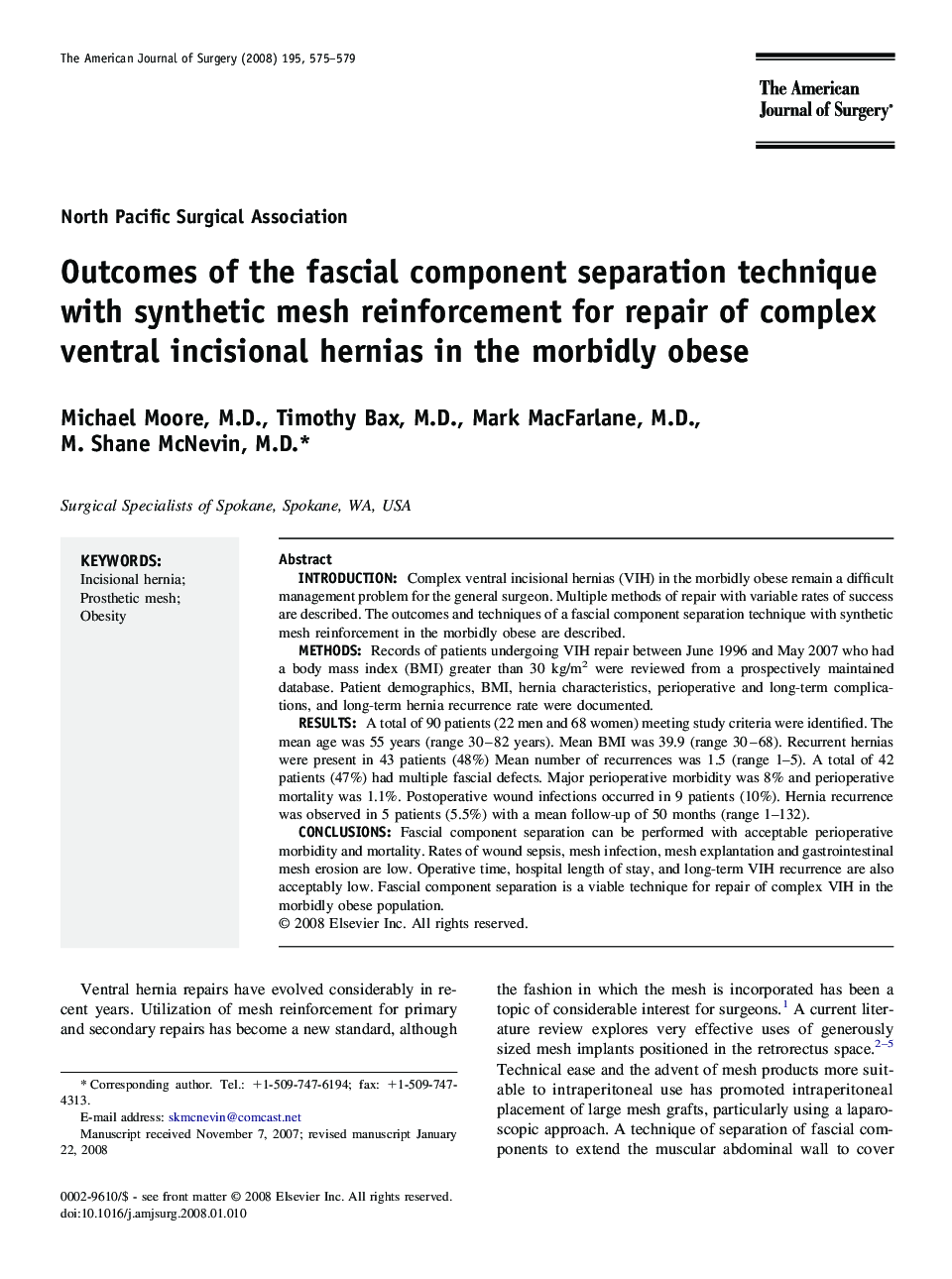| Article ID | Journal | Published Year | Pages | File Type |
|---|---|---|---|---|
| 4281784 | The American Journal of Surgery | 2008 | 5 Pages |
IntroductionComplex ventral incisional hernias (VIH) in the morbidly obese remain a difficult management problem for the general surgeon. Multiple methods of repair with variable rates of success are described. The outcomes and techniques of a fascial component separation technique with synthetic mesh reinforcement in the morbidly obese are described.MethodsRecords of patients undergoing VIH repair between June 1996 and May 2007 who had a body mass index (BMI) greater than 30 kg/m2 were reviewed from a prospectively maintained database. Patient demographics, BMI, hernia characteristics, perioperative and long-term complications, and long-term hernia recurrence rate were documented.ResultsA total of 90 patients (22 men and 68 women) meeting study criteria were identified. The mean age was 55 years (range 30–82 years). Mean BMI was 39.9 (range 30–68). Recurrent hernias were present in 43 patients (48%) Mean number of recurrences was 1.5 (range 1–5). A total of 42 patients (47%) had multiple fascial defects. Major perioperative morbidity was 8% and perioperative mortality was 1.1%. Postoperative wound infections occurred in 9 patients (10%). Hernia recurrence was observed in 5 patients (5.5%) with a mean follow-up of 50 months (range 1–132).ConclusionsFascial component separation can be performed with acceptable perioperative morbidity and mortality. Rates of wound sepsis, mesh infection, mesh explantation and gastrointestinal mesh erosion are low. Operative time, hospital length of stay, and long-term VIH recurrence are also acceptably low. Fascial component separation is a viable technique for repair of complex VIH in the morbidly obese population.
